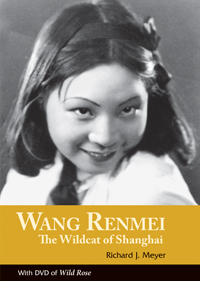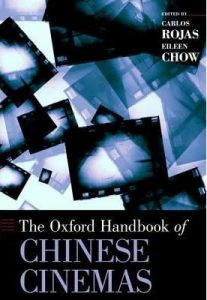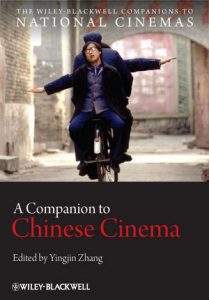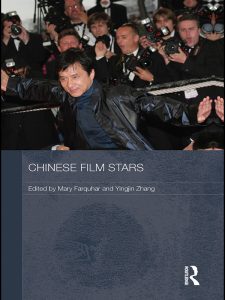Fiery Cinema (2015), by Weihong Bao
What was cinema in modern China? It was, this book tells us, a dynamic entity, not strictly tied to one media technology, one mode of operation, or one system of aesthetic code. It was, in Weihong Bao’s term, an affective medium, a distinct notion of the medium as mediating environment with the power to stir passions, frame perception, and mold experience.
Shanghai Filmmaking (2014), by Huang Xuelei
In Shanghai Filmmaking, Huang Xuelei invites readers to go on an intimate, detailed, behind-the-scenes tour of the world of early Chinese cinema. She paints a nuanced picture of the Mingxing Motion Picture Company, the leading Chinese film studio in the 1920s and 1930s, and argues that Shanghai filmmaking involved a series of border-crossing practices.
Wang Renmei (2013), by Richard J. Meyer
Wang Renmei was on a fast track to become one of China’s leading film stars in the 1930s. Her early films were received with magnificent praise by audiences and critics alike, though she later lamented that she became famous too early and never had a chance to properly study acting.
The Oxford Handbook of Chinese Cinemas (2013), edited by Carlos Rojas and Eileen Chow
What does it mean for a cinematic work to be “Chinese”? Does it refer specifically to a work’s subject, or does it also reflect considerations of language, ethnicity, nationality, ideology, or political orientation? Such questions make any single approach to a vast field like “Chinese cinema” difficult at best. This Handbook presents thirty-three essays by leading researchers and scholars intent on yielding new insights and new analyses using three different methodologies.
Visualising China, 1845-1965 (2013), edited by Christian Henriot and Wen-hsin Yeh
In Visualizing China, the authors join forces to launch a broader inquiry aimed at a synergistic understanding of the larger story of visuality in modern China. The essays cluster around several nodal points including photographs, advertising, posters and movies, spanning from the 1840s to the 1960s, and devote special attention to modern Chinese practices in the visualization of things Chinese.
A Companion to Chinese Cinema (2012), edited by Yingjin Zhang
A Companion to Chinese Cinema is a collection of original essays written by experts in a range of disciplines that provide a comprehensive overview of the evolution and current state of Chinese cinema.
The Origins of the Left-wing Cinema in China (2012), by Vivian Shen
This book takes a cultural studies approach to analyze and account for the ways in which related to film, literature, cultural production, ideology, social change and modernity were in raised in the leftwing film movement of the 1930s.
Chinese Women’s Cinema (2011), edited by Lingzhen Wang
The first of its kind in English, this collection explores twenty one well established and lesser known female filmmakers from mainland China, Hong Kong, Taiwan, and the Chinese diaspora. Sixteen scholars illuminate these filmmakers’ negotiations of local and global politics, cinematic representation, and issues of gender and sexuality, covering works from the 1920s to the present.
China on Film (2011), by Paul G. Pickowicz
Leading scholar Paul G. Pickowicz traces the dynamic history of Chinese filmmaking and discusses its course of development from the early days to the present.
Chinese Film Stars (2010), edited by Mary Farquhar and Yingjin Zhang
This volume of original essays fills a significant research gap in Chinese film studies by offering an interdisciplinary, comparative examination of ethnic Chinese film stars from the silent period to the era of globalization.











